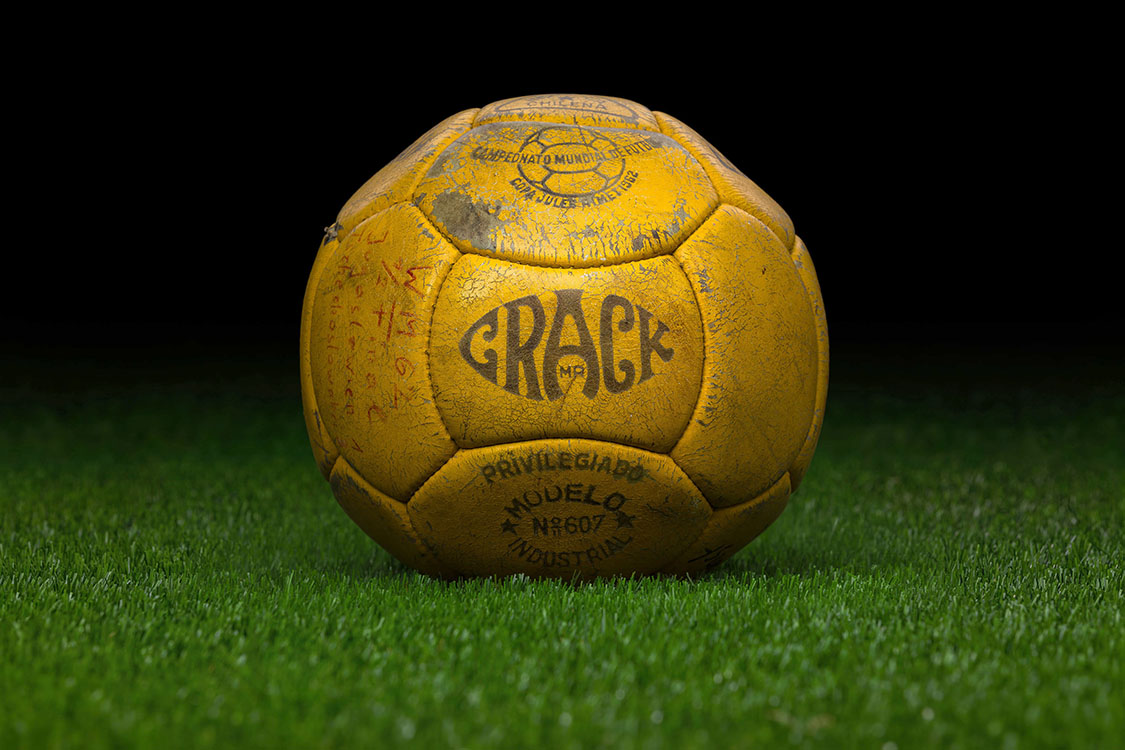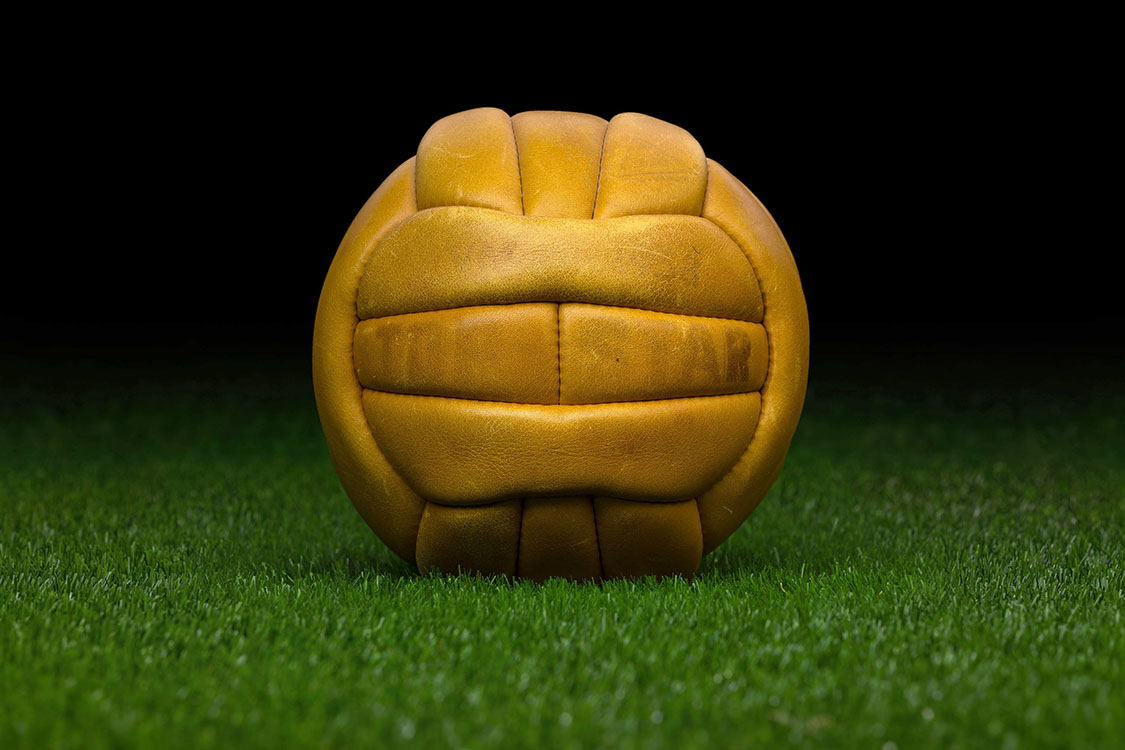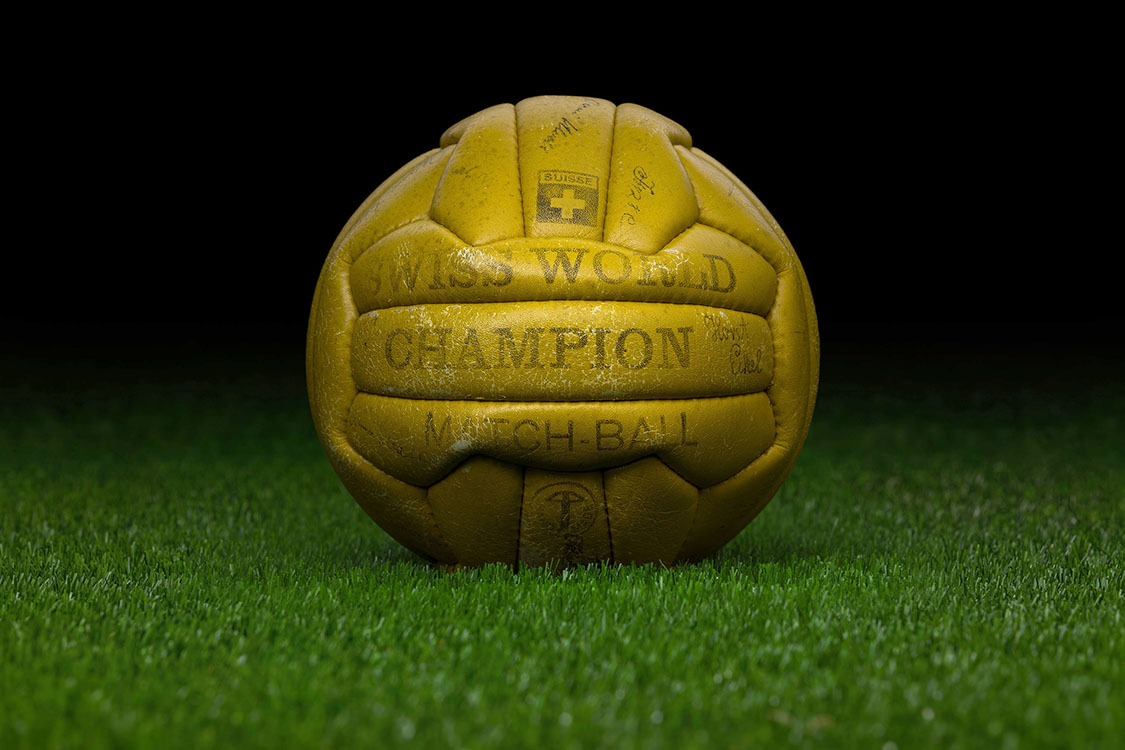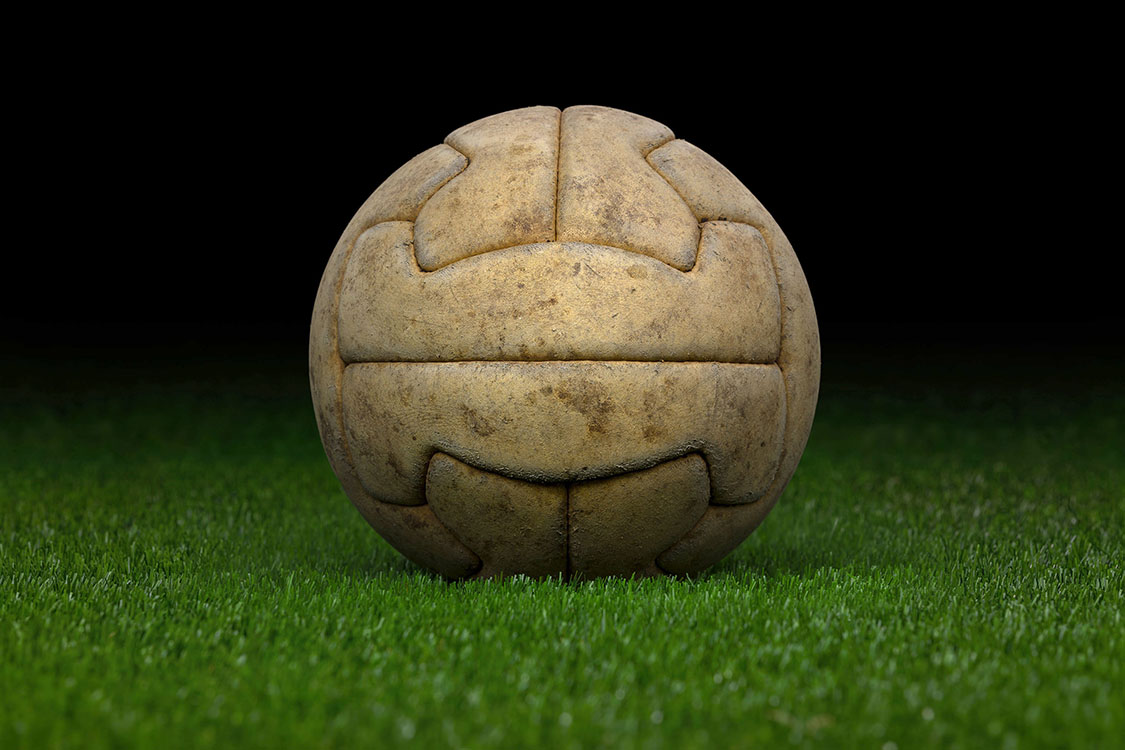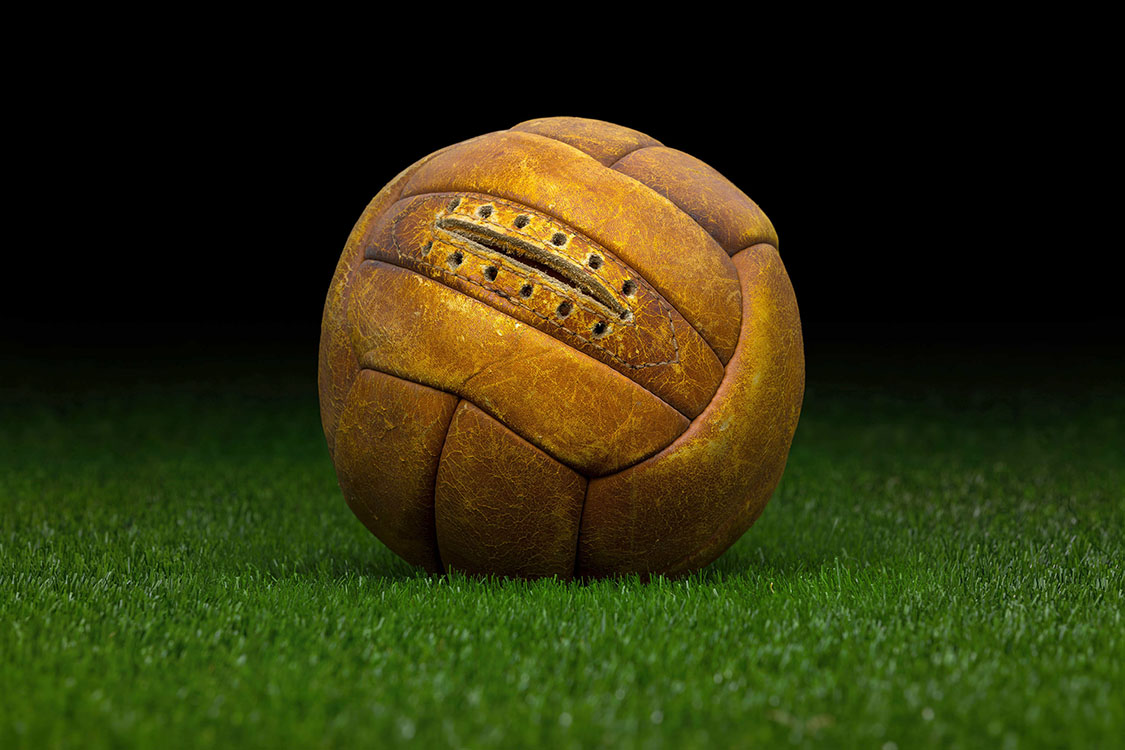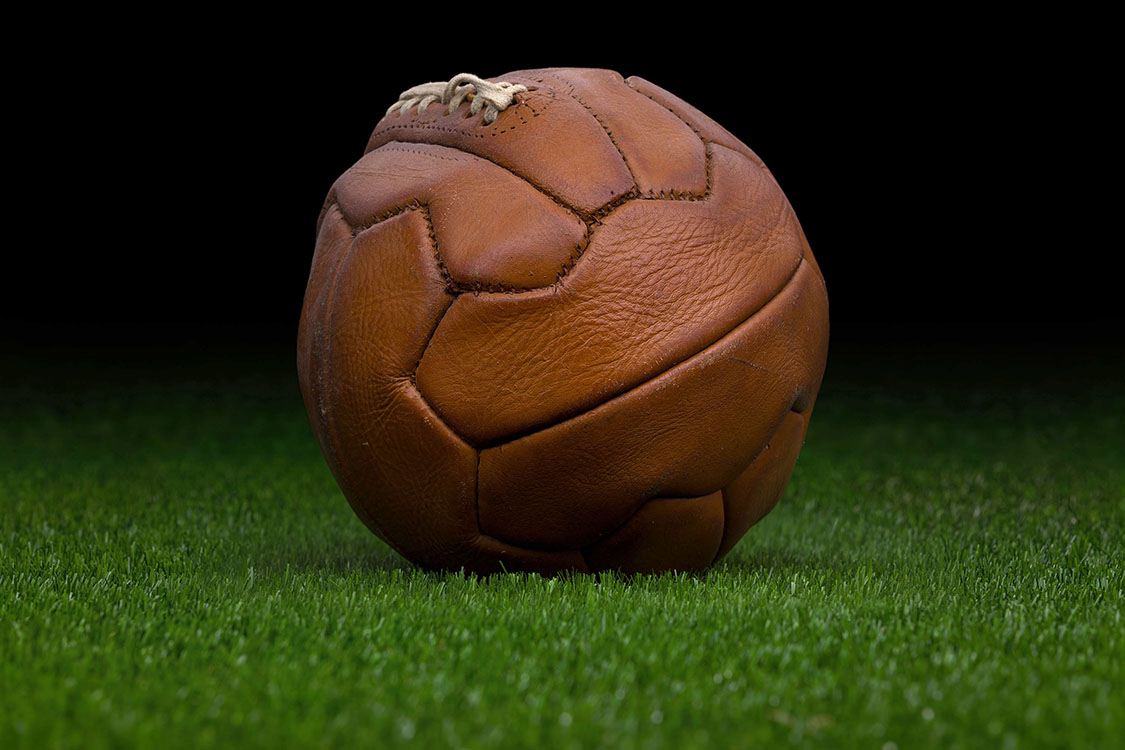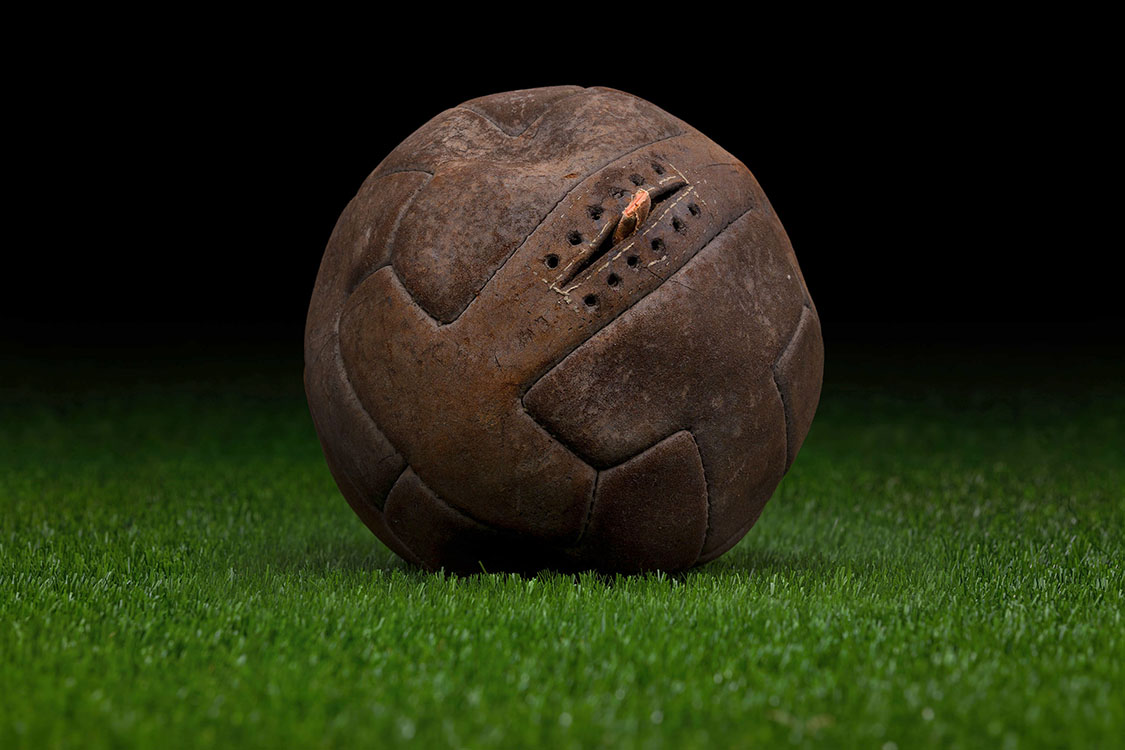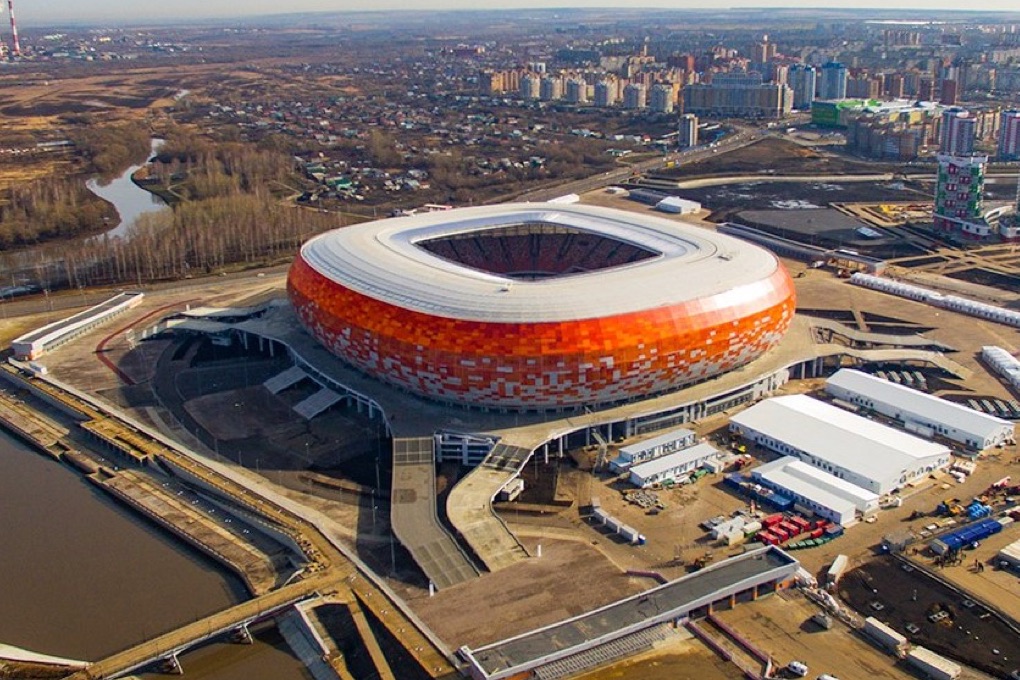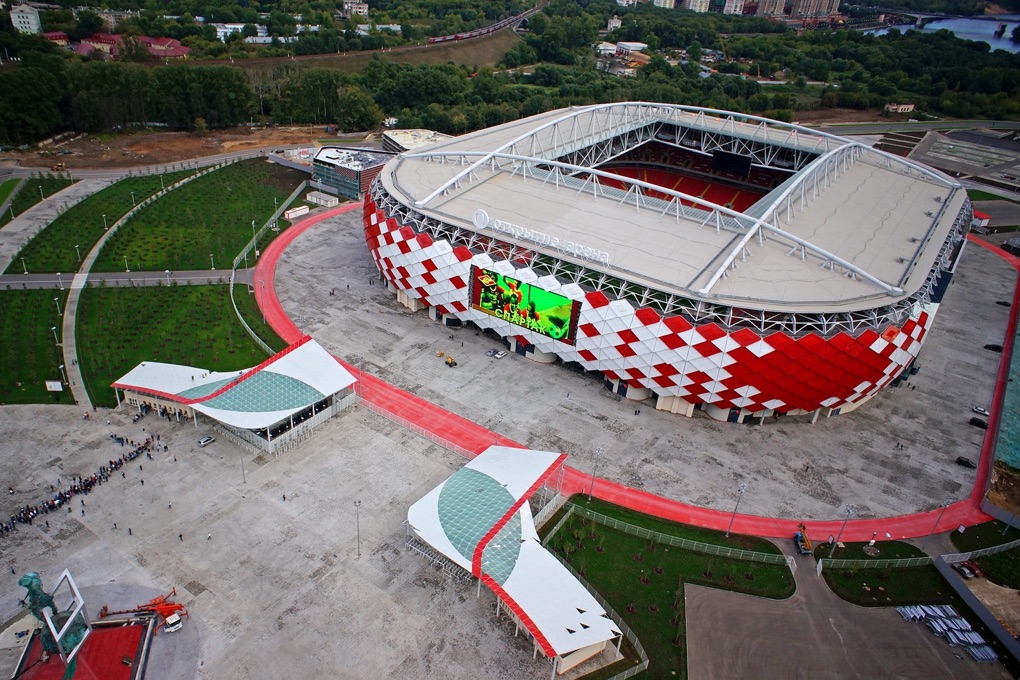The Crack ball had an innovative design. It was composed of 18 irregular polygonal panels, having three different shapes: hexagonal, rectangular and hexagonal curved, all joined together by manual sewing. With the new latex valve the air and the spherical shape was retained longer. The Crack ball is still aesthetically considered one of the most elegant World Cup balls. However, the quality of the coloured coating was poor and did not last for very long. European teams did not like the ball, therefore 100 pieces of the 1958 Top Star were sent as reserves to Chile, in case the Crack model would fail in a match.
Contents courtesy of Worldcupballs.info
